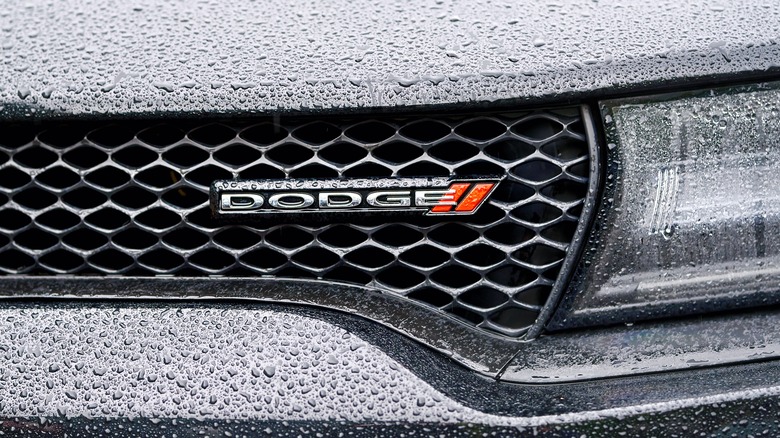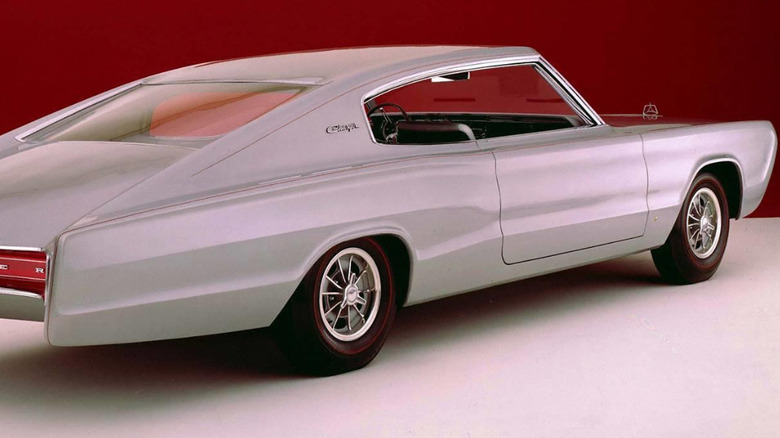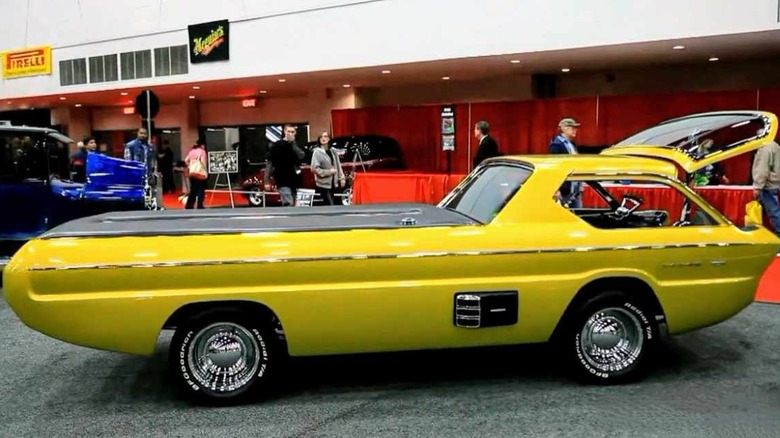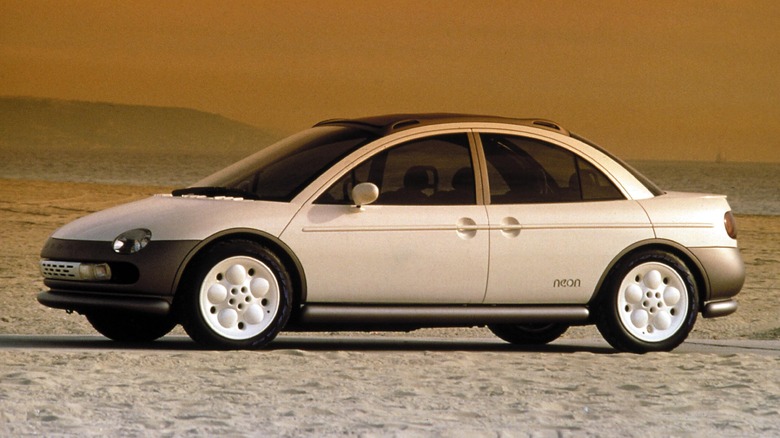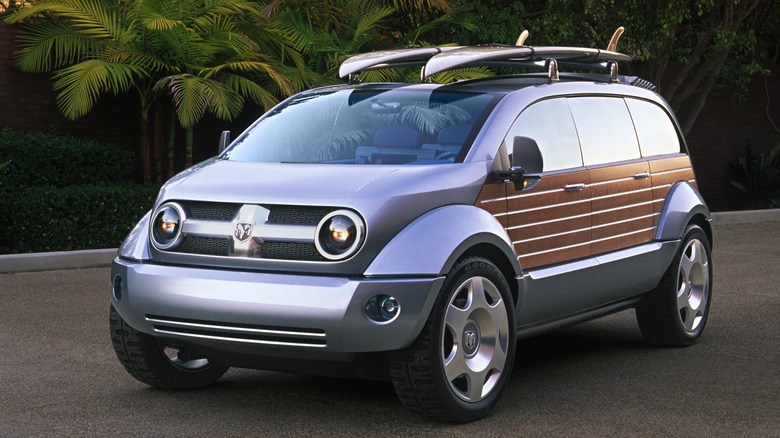4 Dodge Concept Cars That We're Glad Were Never Mass Produced
Concept cars let designers go wild, as shown by some of the coolest concept cars of all time. They are idea cars built to push boundaries and either showcase some newfangled tech, are meant to rekindle an automaker's aesthetics, or are just to see if a thing can be made, whether it resonates with consumers or not.
Usually, concept cars are incredible feats of design and styling that would please the most ardent auto enthusiasts if allowed to roll off the assembly line in numbers. Unfortunately, these one-offs would typically cost the company such an exorbitant amount of money to produce in any substantial numbers that they'd never turn a profit. However, bits and pieces that are proven successful almost always appear in other makes or models down the line in a package more appropriate for mass production.
I love concept cars because even if they are ugly ducklings, they're alive with a vibrant personality that flies in the face of conventional cookie-cutter design. That said, some of these fanciful vehicles built through the decades should never have been allowed to get beyond the concept stage. Here are some from Dodge that we're glad were never mass-produced.
1965 Dodge Charger II Concept
The HEMI-powered Dodge Charger is an iconic muscle car from the 1960s and '70s that combined incredible styling with beefy horsepower. Even today's reincarnations are breathtaking works of metallic art and don't make you think about slang terms like "tuna boat," "land yacht," or "barge." However, when you first behold the Charger II concept Dodge rolled out in 1965, those words do come to mind.
Sure, it had power windows and ventilated seatbacks. The doors were sleek and svelte, with concealed latches instead of conventional handles, and the engine compartment was massive enough to house whatever high-performance V8 Dodge wanted to drop in it. But with a total length of 215 inches (and a 117-inch wheelbase), the massive hood combined with the expansive rear window, trunk deck, and oddly flailed tail fins make it look as long as an aircraft carrier.
The final version of the Charger that went into production in '66 took many of the styling cues from this initial fastback concept, but thankfully tweaked both the front and back enough to make it less — Titanic. Not only did Dodge cut off almost a foot (203.6 inches with the same 117-inch wheelbase), but the headlights were also cleverly built flush into the redesigned grille. During the day, they weren't visible, but when turned on rotated into position and looked almost like they were "blinking" at you.
[Featured image by Dodge via Wikimedia Commons | Cropped and scaled | CC BY Public Domain]
1967 Dodge Deora Concept
The Dodge Deora is a wild vehicle, designed by Harry Bradley and built by the Alexander Brothers, that came out of the crazy Hippie Era of the 1960s. Even though it was a custom car, Dodge showed it off as a concept showcasing an advance in styling."
Sources list it as either a '65, '66 or '67. The confusion stems from the fact that it was designed using a heavily modified 1965 Dodge A100 forward-control pickup but first appeared in public at the 1967 Detroit Autorama. There, it won nine awards, not the least of which was the highly respected Ridler Trophy, and became such a pop culture phenom that Hot Wheels made it part of the original 1968 "Sweet 16" line-up, and AMT made it into a model.
Despite innovative features and a "mid-engine" slant inline six behind the cab, there were no doors. To get into the driver's seat — placed on the cab's floor so your legs stuck straight out — a person pushed a button on the dash area mounted onto the driver's door that lifted the windshield skyward. The almost tailgate-like lower portion of the nose (which didn't fold down like a tailgate) pivoted on a center hinge. Finally, the swing-away steering wheel had to be moved out of the way before finally clambering inside, which only a gymnast could pull off. We'll agree; it gets an A+ for creative out-of-the-box design but an F for functionality.
1991 Dodge Neon Concept
Neons are best known as plucky little compacts that are great on gas mileage but lack any visual oomph or pizzazz. Yes, there are enthusiasts out there racing around in high-performance turbocharged Neon SRT-4s that will go over 155 mph, but that's the exception to a car meant to go up against the likes of Ford's Escort, Honda's Civic, Nissan's Sentra, and Toyota's Corolla.
However, this Neon concept from 1991 is one most people didn't even know existed. It had four doors that opened automatically, with the front pair sliding forward while the rear slid backward (removing the need for a B-pillar). It also came with a full-length power fabric sunroof and a self-stowing rear window that disappeared from view. The fully reclining seats with foam cushions and the stereo system with headrest speakers were removable. It also had an automatic slide-out package bin in the trunk.
If those features weren't enough to blow your mind (especially for the era), then two of its "greener" ones might do the trick — almost every piece of this concept could be recycled (the wheels were even made from recycled aluminum), and it even had an onboard trash compactor. We're glad Dodge didn't make the actual production Neon (introduced a few years later) with the features it jammed into this commuter car, because they all should have gone into something with a better visual package.
2003 Dodge Kahuna Concept
Cowabunga, dude! If images of the Teenage Ninja Mutant Turtles or California surfers immediately sprang to mind, well, that's what Dodge was going for with this wood-paneled mini-van contraption. It looks like they mashed up a Mini Cooper with a Volkswagen Beetle to make the nose, then slapped on some panels (in this case, composite bird's-eye maple) from an old Family Truckster station wagon.
The six-passenger Kahuna debuted at the 2003 North American International Auto Show in Detroit. It was Dodge's attempt at maximizing interior space while making it as flexible (i.e., multipurpose utility) as possible. While all three rows of seating were "flexible," only the back two could be folded all the way down and turned into tables (complete with cup holders).
This SUV had very little in the way of front or rear overhangs, and we'll admit its open-air system was pretty neat. First, the roof was made with a see-through, water-resistant canvas that could be retracted to reveal a full, lengthy opening. Everything from the B-pillar to the rear bumper could be opened as well, because the windows were frameless and all the glass slid down into the doors.
Aside from the odd idea of resurrecting wood panels, the front end was an effort to brandish a new "bold" face for Dodge, one that simply didn't work. What really makes us cringe, though, is that it came with two carbon-fiber surfboards. You can, after all, try too hard to make a point.
